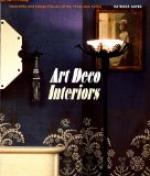Every period had its own weak points, so we find the Adam brothers at times making wall-brackets which were too heavy with ram’s heads, garlands, etc., and the Adam chairs were undoubtedly bad. They had backs with straight tops, rather like Sheraton chairs, and several small splats joining top rail to seat. The bad chairs by Adam, were improved upon by Sheraton and Heppelwhite. The legs of Adam furniture were straight.
The ideal eighteenth century interior in England was undoubtedly an Adam room with Heppelwhite or Sheraton furniture.
Sir John Soane, architect, had one of the last good house interiors, for the ugly Georgian style came on the scene about 1812. Grinling Gibbons’ carvings of heavy fruits and flowers, festoons and masks made to be used architecturally we now see used on furniture, and often heavily gilded.
William Morris was an epoch maker in English interior decoration, for he stood out for the “great, simple note” in furnishings. The pre-Raphaelites worked successfully to the same end, reviving classic simplicity and establishing the value of elimination. The good, modern furniture of to-day, designed with reference to meeting the demands of modern conditions, undoubtedly received a great impetus from that reaction to the simple and harmonious.
CHAPTER XXII
THE COLONIAL PERIOD
The furniture made in America during the eighteenth and early nineteenth centuries was reproduced from English models and shows the influence of Chippendale, Sheraton, Heppelwhite and the Adam brothers. For those interested in these early types of American output, the Sage and other collections in the Metropolitan Museum, New York, give a delightful object lesson, and there has been much written on the subject in case any data is desired.
If some of our readers own heirlooms and plan reproducing Colonial interiors of the finest type, we would advise making an effort to see some of the beautiful New England or Virginia homes, which remain quite as they were in the old days; fine square rooms with hand-carved woodwork, painted white, their walls panelled in wood and painted the same white. Into these panels were set hand-painted wall paper. The authors saw some made for a house in Peabody, near Salem, Massachusetts, some time between 1760 and 1800, and were amazed to find that the colours were as vivid as when first put on.
Here let us say that the study of interior decoration throws a strong light on the history of walls. In Gothic days the stone or wood of the feudal hall was partially concealed by tapestries,—the needlework of the women of the household, a record of the gallant deeds of men used as interior decoration. Later of course, the making of tapestries became a great industry in Italy, France and Belgium, an industry patronised by kings and the nobility, and subsidised by governments.




